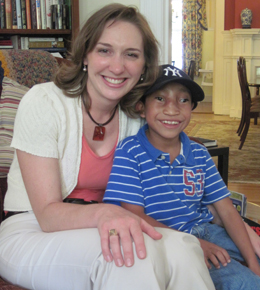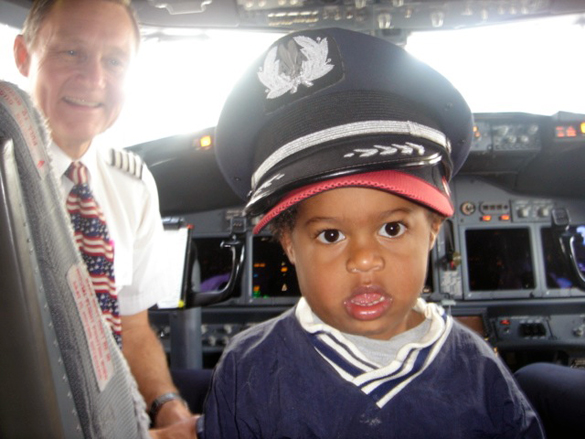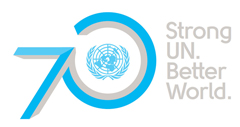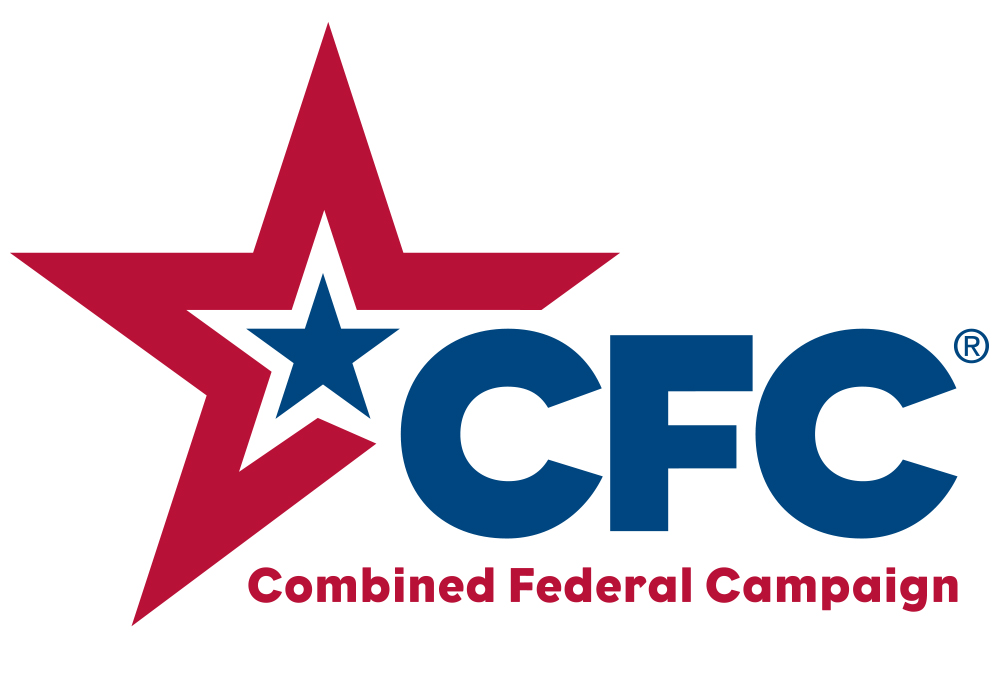Flying High: Airline Ambassadors Help Bring Critically Ill Children to U.S.
 When Soad Hamdan first met Osvaldo at La Aurora International Airport in Guatemala, he was a shy, introverted 9-year-old boy.
When Soad Hamdan first met Osvaldo at La Aurora International Airport in Guatemala, he was a shy, introverted 9-year-old boy.
He wore his hat low on his head, hiding his widespread eyes and other cranial deformities caused by a birth defect known as a nasal encephaloceles. He barely talked. He didn’t make eye contact. He didn’t have any friends.
Hamdan felt an immediate connection. “I was really attached to him,” she says.
As a medical escort for Airline Ambassadors, a nonprofit organization that leverages connections in the airline industry for humanitarian aid, Hamdan accompanies critically ill children like Osvaldo as they travel to the United States for medical treatments. Since many families cannot afford to fly with their children, Airline Ambassador escorts travel with the kids and make sure they meet up with their host families.
Hamdan, who lives in Rogers Park, has been a flight attendant with American Airlines for 17 years and began volunteering for Airline Ambassadors in 2009. When she talks about Osvaldo and the other children with whom she has traveled, her eyes well with tears.
“These kids are the best kids ever,” she says. Many are scared of the attention they get from fellow passengers, or are anxious about traveling to a new country, so they often become attached to their escort. “You get emotionally involved, and so do the kids,” she says.
Airline Ambassadors was founded in 1996 when American Airlines flight attendant Nancy Rivardsaw an opportunity for flight attendants to travel with boxes of supplies for needy children. Since then, the nonprofit has also created the medical escort program, as well as an initiative to help train flight attendants to recognize and prevent human trafficking.
 “You get so much more back than you’re giving,” says Julie Riley of Winnetka, who has been a medical escort for Airline Ambassadors since 2003. “These children, with their deformities and awful setbacks… you still see a wonderful spirit in them. It’s been a really great experience.”
“You get so much more back than you’re giving,” says Julie Riley of Winnetka, who has been a medical escort for Airline Ambassadors since 2003. “These children, with their deformities and awful setbacks… you still see a wonderful spirit in them. It’s been a really great experience.”
Riley has a light blue folder at least an inch thick, bursting with photos, ticket stubs and drawings from kids with whom she has traveled. An American Airlines flight attendant since 1985, Riley became involved with the program after finding out about it in a company newsletter.
“This was a perfect fit for me,” Riley says. “I know the industry, travel abroad, understand the airports, [and] love kids. I saw it as an opportunity to do something, to give back.”Beyond using their travel perks to help kids in need, flight attendants are also well equipped to deal with the unpredictability of air travel. With the help of Margaret Whitehead, the director of the children’s medical escort program for Airline Ambassadors, volunteers figure out how to deal with missed connecting flights, miscommunications with host families, and handling children who might be scared or anxious about leaving home for the first time.
After one particularly rough trip full of weather delays, Riley even brought a young girl to her home with her after they missed their flight from Chicago to Grand Rapids, Mich.
“It was, on multiple levels, the best experience for myself and my family,” Riley says about the night the young girl, Maya, stayed in her home. Riley’s daughter, Jenna, was so moved by the experience that she sent Maya home with two extra suitcases of her old clothes and talked about the visit during her church confirmation.
When you help one person, then they help someone else, says Riley. “It’s one beautiful, touching thing.”
It’s a spark that sets off another spark, and it’s not uncommon for volunteers to experience the generosity of others during their trips. Hamdan has received help from fellow passengers who can navigate the language barriers between her and the children, and one traveler even gave Riley $20 to give to a child who was traveling home after surgery. Additionally, fellow airline personnel, including pilots and flight attendants, take great steps to ensure a child has a positive travel experience.
Most flight attendants who participate in the program work for American Airlines, but there are a few attendants from Delta and United Airlines. The program relies heavily on American Airlines because the company ensures the flight attendants receive positive space—or confirmed seats—on the flight. Additionally, the kids can get tickets through the company’s Miles for Kids in Need program, which allows donated miles to be used for children seeking medical treatment. According to Whitehead, there are roughly 150 to 175 active American Airline volunteers.
Hamdan often tries to recruit fellow flight attendants to join the program. She was introduced to it through a friend who was actively involved and has been impressed with the organization and its directors.
“I have a lot of respect for [Whitehead] and for Airline Ambassadors in general,” she says. “We’re the people who bring the kids, but they organize it. It’s an amazing program.”
When Hamdan and Osvaldo reunited at the Richmond International Airport in Virginia after he spent months getting corrective surgeries, he was a different person. The silent, introverted little boy who refused to make eye contact ran into her arms when he saw her at the airport. “He wasn’t the shy boy I knew,” Hamdan says. “He wouldn’t stop talking. He was happy and smiling.”
“You see that smile?” she asks, pulling up a photo on her iPhone. “He was a different person. He felt good about himself.”
Find out how to donate your miles to Miles for Kids in Need





